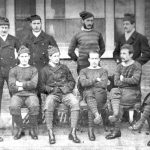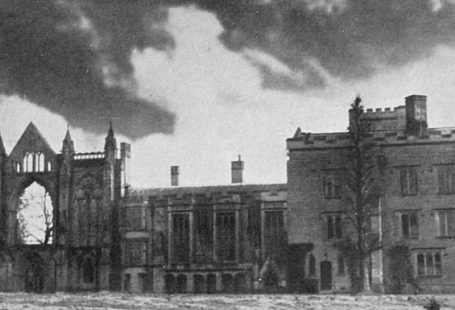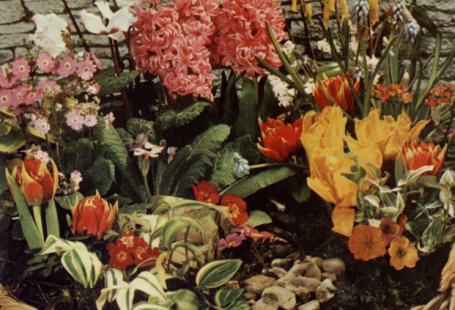To celebrate International Women’s Day this year, and as part of our look at the history of football this March, in this very special blog we will be taking a look at pioneering early women footballers.

Register now and explore the Archive
From those who took to the pitch in the eighteenth century Bath, to those who played in the first international match in 1881, we will look at the women who disrupted the status quo in order to play a game, a game that was believed to be the preserve of men, that they were passionate about. We will look at the challenges they faced, how they were ridiculed and abused, and how by the 1920s women footballers had won the respect they deserved, following the establishment of games played between women munitions factory workers.

So read on to discover more about early women footballers, their triumphs and their troubles, all using newspapers sourced from the British Newspaper Archive.
‘New and Extraordinary Entertainment’
Despite the first recorded instance of association football being played between women in the United Kingdom taking place in 1895, we found earlier examples of women playing the game. So early was one of the mentions we found, that it took place over a hundred years before the game of football was codified.
On 8 October 1726 this report from Bath appeared in the Ipswich Journal:
Yesterday a new and extraordinary Entertainment was set on Foot for the Divertion of our polite entry; and what should it be but a Match at Foot-Ball, play’d by six young Women of Side, at the Bowling Green: Cards, Dice, Concerts, Plays, Ball &c are the common Entertainments of the Week; but for want of these, in Publick, on Saturdays, the Meeting sometimes serves for an Amusement.

This report describes the ‘new and extraordinary entertainment’ of women playing football at the Bowling Green in Bath, with six players a side. However, that is exactly what it was to curious onlookers, entertainment, coupled in with other leisure activities such as cards, dice and concerts.
The sight of these women playing football every Saturday served ‘for an amusement.’ It was not some serious game of sport, and the sport was taken very seriously in the eighteenth century, which you can read more about here, no indeed. It was an amusing spectacle, and for the women of the nineteenth and twentieth centuries, they too would have to fight to be taken seriously as footballers.
A ‘Ladies Football Match in Edinburgh’
Fast forward some 160 years, to May 1881. By now the Football Association had been established, and the early football of the eighteenth century had been split into two branches, rugby and association football. And in the May of 1881, the Edinburgh Evening News reported on a ‘Ladies’ Football Match in Edinburgh:’
On Saturday an international football match, by teams composed wholly of ladies, was played in the Hibernian Park, Easter Road, Edinburgh. This is the first football match played by ladies in Scotland.

This international match, played between women from Scotland and England, predates the first officially recognised women’s football match by some fourteen years. And news of this match travelled beyond Scotland to reach the pages of the Times of India by June 1881:
The Scotch papers report that an athletic novelty was presented to the Edinburgh public the other day in the form of a ‘ladies football match’ which took place in the Hibernian Park, Eastern Road. The players (says one paper) were twenty-two young women – one half, we believe, being Scotch, and the other English – who have formed themselves into an association for the purpose of popularising football as a feminine pastime…
Just like the women football players of the 1720s, these women footballers were regarded as something of a ‘novelty.’ But these women were very serious, they intended, says the Times of India, to play ‘public matches in different parts of the country.’ A large crowd of 2,000 people gathered at Hibernian Park to watch their first match, the fixture having ‘occasioned some interest and curiosity in both athletic and non-athletic circles.’
The Times of India paints a wonderfully vivid picture of the women footballers’ arrival at the match:
Shortly after three o’clock the players arrived at the ground in an omnibus drawn by four horses, half the competitors riding outside, their football costume conspicuous…Most of the players were well-built, athletic-looking girls, and the teams looked exceedingly picturesque in their bright and tastefully arranged costumes.

Indeed, the focus of the press did appear to be on what the women were wearing, the Edinburgh Evening News going into further details:
The Scottish team, which was made up in Glasgow and neighbourhood, were dressed in blue jerseys, with a crimson sash round the waist, knickerbockers, and blue and white hose, and high lace boots. A badge with two Union Jack flags was sewed on the breast of the jerseys.
The English team had on crimson jerseys, with a blue sash, white knickerbockers, crimson and white hose, and high-laced boots. They wore badges, with the English standard of the lion rampant. Both teams wore crimson and white woollen ‘couls.’
‘A Most Unfeminine Exhibition’
And it was soon time for the game to begin, the Times of India noting how the match was ‘played according to Association rules,’ although it was the first time that the women had played ‘in an open field,’ having practiced only in a hall before.
The Edinburgh Evening News writes how the game represented ‘on the whole, a very mild kind of football,’ the women only having had two weeks of practice before the match. And at first, the Times of India reported that the ‘English team were to have the best of it,’ but after half an hour Lilly St. Clare scored for Scotland, with Louise Cole scoring the second. A third goal came from the ‘combined play of Miss Isa Stevenson and Miss Maude Riweford,’ the match ending ‘in favour of the Scotch by three goals to nothing.’
But the women footballers that day did not only have the opposite side with which to contend. They faced the intense ridicule of the crowd, the Edinburgh Evening News reporting how:
A general feeling was apparent, however, to make fun of the match, and when the Scotch team, which kicked off, played the first goal, the spectators cheered ironically.
Meanwhile, the Times of India detailed how that whenever one of the players took a ‘tumble or two,’ this was ‘greatly enjoyed by the spectators.’ The newspaper went on to report how the crowd:
…were pretty free with their criticisms, not only of the play, but of the appearance and behaviour of the players, treating the various episodes and accidents of the game with sarcastic or personal remarks, and with loud guffaws. The general feeling seemed to be that the whole affair was a most unfeminine exhibition, and it should certainly be rash to predict, from Saturday’s experiment, that ‘ladies’ football matches’ will become popular in Scotland.
But such criticism did not deter the women, who travelled to Glasgow a few days later, as reported the Times of India. Here they played a match at the Shawfield recreation ground at Rutherglen, this time in front of a crowd of 3,000 spectators, but soon the fixture descended into chaos. After half time, the crowd had swelled to 10,000 people and they broke through the barriers surrounding the pitch.

Play was stopped, and the Times of India recorded how:
Several of the females were very roughly treated, and four of them were lifted from the ground in a fainting condition and carried to their omnibus. The majority of the girls kept together and managed to reach the conveyance, in which they were driven back to the city. Rutherglen Bridge was lined on both sides, and some roughs attempted to drag the girls from the ‘bus, but in this they were prevented by a number of onlookers.
In their attempt simply to play football on male terms, these women had been violently rebuffed. It would be an uphill struggle for women footballers to be taken seriously in the nineteenth century, but one woman was keener than most to take this challenge on.
‘The Female Player Has Come To Stay’
This woman was Nettie Honeyball, not her real name, indeed, her real identity is not known. She was the secretary of the British Ladies’ Football Club, which she founded in the 1890s. It was this team that played in the first officially recognised women’s association football match in 1895, and earlier that year a journalist from The Star went to interview Honeyball at her home in London’s Crouch End.
This interview was republished in The Cornish Telegraph, 24 January 1895, and was conducted by an unnamed woman journalist, who observed at the start of her article how:
The female player has evidently come to stay. She has doffed the common or garden frock; she has donned the useful and picturesque knickers, stepped into the bold big boots, done up her back hair, and stands prepared for the fray.

Leading the charge was her interview subject, Nettie Honeyball, who had just returned fresh from practice. She and her team, the British Ladies’ Football Club, or BLFC, practised twice a week from one o’clock till dusk, and she had recruited them by means of an advertisement placed in the Morning Leader. Honeyball had received a good response; the BLFC boasted ’26 members, ranging between 15 and 26 years of age,’ and it was her intention that these women should be able to make money from the game, like their male counterparts.
Indeed, she issued this rallying cry to her interviewer:
Aren’t women as good as men? We ladies have too long borne the degradation of presumed inferiority to the other sex. The subject has been in my mind for years. If men can play football so can women. At least, we’ll try to. If men cycle, then we’ll cycle too…The repeated expression, ‘That’s a woman!’ is simply dreadful. We’ve taken up this scheme with determination, and though we don’t hope to excel men for years, yet we will endeavour to show the public that females are not the nonentities they imagine them to be.’

Nettie Honeyball was taking her role as secretary of the BLFC seriously; she wanted her team to play a game of science, and she had enlisted the help of a couple of Millwall players for ‘some blackboard lessons.’ She announced, moreover, during the course of the interview, her intention for a public match to be played, North versus South, at the Crouch End ground. Her request for the match to take place at the Oval, Kennington, where high profile men’s matches were then played, had been denied, and so the match, played 30 minutes each way with a ‘somewhat smaller than usual’ ball would take place at Crouch End, near Honeyball’s home.
Nettie Honeyball had thrown down the gauntlet in her attempt ‘to make lady footballing popular,’ demanding of her interviewer:
Why shouldn’t it be popular? I am a woman, and I can see no reason why our sex should be so contemptuously depreciated. We have speed and skill, and they shall not lie dormant. This is no girlish folly. The British Ladies Football Club is a stern reality.
And as for her interviewer, she concluded that ‘if ladies’ football can succeed’ then Nettie Honeyball was ‘the woman to make it.’
‘A Travesty Of Football’
The proof, as they say, would be in the pudding, and in March 1895 Nettie Honeyball’s women footballers took to the field. The Sketch, which featured photographs of the opposing teams, set the following scene for its readers:
There was an astonishing sight in the neighbourhood of the Nightingale Lane Ground, Crouch End, on Saturday afternoon. Crouch End itself rubbed its eyes and pinched its arms. The intelligent foreigner might have been excused for imagining some State function was taking place – a Drawing-Room, for instance. All through the afternoon train-loads of excited people journeyed over from all parts, and the respectable array of carriages, cabs, and other vehicles marked a record in the history of Football. Yet all that this huge throng of ten thousand had gathered to see was the opening match of the British Ladies’ Football Club.

Like the match fourteen years before in Edinburgh, and the Saturday games in Bath in the 1720s, the promise of women playing football represented ‘an astonishing sight,’ a curiosity, which had driven thousands to watch the game.
The game began at a quarter to five, The Sketch noting how the players made a ‘pretty picture,’ the North team dressed in bright red, and the South team dressed in quartered blue. However, the writer for The Sketch was less than impressed by the football exhibited that day, writing how the outfits worn by the women were all ‘that can be said in favour of the members of the British Ladies’ Football Club.’
He went on to scathingly comment how:
As exponents of the popular winter pastime they had not the slightest qualification to take the field. I do not wish to appear uncharitable, but candour compels the statement that the experiment is not to be repeated. Indeed, had not the spectators been of the most good-humoured description, it is possible something decidedly unpleasant would have occurred. As it was, the efforts of the performers were watched with supreme pity, and the exodus began before the affair was half-way through.

He describes how the players ‘wandered aimlessly over the field at an ungraceful jog-trot,’ and how ‘the most elementary rules of the game were unknown’ to them. Indeed, the Totnes Weekly Times concurred, describing how by the end of the game ‘many of them appeared greatly distressed.’ Moreover, this report concluded:
The ladies’ idea of combination was ludicrous, and the game, as might have been expected, was a travesty of football. At half time the North led by two goals to one goal, and ultimately won by seven to one.
The unfortunate goalkeeper for the southern team was responsible for many of the goals that were conceded, although the writer for The Sketch did note how:
The lady who acted as custodian for the North had come all the way from Glasgow, and, everything considered, made a creditable display. Indeed, she did all that it is possible for a woman to do, and really hearty applause greeted her neat punts and cool punches. For the day, she adopted the nom de guerre of ‘Mrs. Graham.’ The other player was a Miss Potter, a tiny girl who, on the left-wing for the winners, performed prodigies of valour.

But despite these impressive showings, the journalist of The Sketch wrote plainly of his views of women playing football:
Let not the British Ladies misconstrue the enormous attendance into a sign of approval. These people had attended purely out of curiosity. Now that the novelty has worn off – its only charm – it would not attract tens where on Saturday it drew thousands. It must be clear to everybody that girls are totally unfitted for the rough work of the football-field. As a means of exercise in a back-garden it is not be commended; as a public entertainment it is to be deplored.

He doubtless hoped that would be the end of the British Ladies’ Football Club, and the death of the aspirations of women footballers in Great Britain. But it was not the last showing of the BLFC, who travelled in 1896 to Ireland to play a game against a male eleven in Wexford. The male eleven were from the St. Patrick’s Gaelic football team, and despite the differences in the game, the Wicklow People in June 1896 describes how the men ‘helped the ladies to get the ball down the field.’
The Wicklow People took a similar, although slightly kinder, view to The Sketch, commenting how ‘the game had to depend altogether on its novelty.’ The match was enjoyed, however, by the spectators, and it was reported that ‘most of the women players were music-hall artists.’ Again, by characterising the women as actresses, with perhaps dubious morals, the Wicklow People was adhering to the narrative that women footballers were a dangerous threat to the status quo.

Indeed, women footballers at the time were necessarily women of good means, as they had the leisure time to play, for Victorian working class women would not have had the spare time to travel around in order to participate in football matches. But all this would change with the coming of the First World War.
Munition Girls on a Mission
In September 1917 the Yorkshire Post and Leeds Intelligencer reported how:
By way of relaxation many of the women munition workers in Leeds have taken up outdoor sports, some of which have hitherto been regarded as a sort of male preserve. One of these is football, according to the Association code; so keen has been the interest shown that already it has been decided to form a football league for munition girls in the district, and for that purpose a silver challenge cup and medals have been promised for the competition.

Women, already filling traditionally male roles in aid of the war effort, were now participating in what had been regarded as traditionally male sports, and this time, the establishment was prepared to take them a little more seriously.
On 5 April 1917 the Shields Daily News printed a short article entitled ‘Girls at Football,’ which ran as follows:
An interesting female football match will take place on Saturday, at Hawkeys Lane, and in the North-Eastern Marine Team one player is said to equal any professional player in the north.

The tone had changed from one of amused incredulity to one of respect. And women footballers were taking to the field across the country, usually as part of a factory team. The Banbury Advertiser in the same month reports on a match between ‘Section I and Section II of the munition girls,’ which took place on the Britannia Works Ground. Such matches served a dual purpose; as a much needed source of entertainment and leisure during the war, and also to raise funds for the war effort. The proceeds of this match were set to go to the Red Cross Society.
Watched by a ‘goodly company,’ the two teams were divided into the reds and the blues, the blues being at the disadvantage of only having ten players. The Banbury Advertiser describes how:
The reds had the best of the game, although the blues played well considering they were at some disadvantage. The backs on both sides exhibited much skill throughout the play. The reds won by six goals to two. We venture to predict that, given fine weather, the girls will have big crowds of spectators in their future matches.

How the tone of reporting on women’s football matches had changed from some twenty years before! And this was exhibited elsewhere in the press, with the Chester-le-Street Chronicle and District Advertiser providing a long and detailed description of match which took place in May 1917 between the Birtley Shell Shop Girls and the Cartridge Shop Girls, even featuring photographs of the two teams.
This match was played in front of a ‘large and mixed crowd numbering about 1,000,’ and the football was noted as being ‘of a fair order.’ One S. Matthews was commended in particular by the newspaper, for her ‘kicking, back-heeling and charging abilities,’ which ‘quite delighted the crowd.’ She scored for her team too, and they were victorious, winning 5-0.

And in Leeds in September 1917 a ‘trial match’ was played at the Armley Cricket Club, as detailed the Yorkshire Post and Leeds Intelligencer. The newspaper reported how:
The players showed that they had some knowledge of the game, and frequent bumps and falls, and even occasional kicks, did not in the least appear to lessen their zeal.
All in all, the article concluded that it was ‘an interesting game, which was much appreciated by the spectators.’ And in March 1918, a sports journalist for the Lancashire Evening Post had his own ‘reflections on girls’ football,’ which were, on the whole, resoundingly positive:
Last Sunday I had the pleasure of seeing for the first time ladies’ football at Deepdale, and of realising for myself one or two aspects of this new development of the women’s labour movement – what it means at the moment and what it may mean in the future. There are those who believe it will be an ephemeral kind of thing, that when the men come home and the real football is resumed women’s football will not be able to survive, at least in a public sense.

For him, however, at that moment in time, eight long months before the end of the war, the important thing was:
…that just now the girls are taking their mission in the game very seriously, and that mission is to assist in some way towards the charitable side of the war and at the same time provide themselves with a little new recreation and interest.
And one particular woman footballer had struck him as particularly impressive, one Miss Florrie Redford, the centre-half of Dick, Kerr’s team. The Dick, Kerr team would go on to be one of the most celebrated and successful women’s team of the age, and it is fitting that we leave our exploration of early pioneering women footballers here, who paved the way for the Dick, Kerr team, and the women footballers of today.
Find out more about the Dick, Kerr team in this special blog by our sister site Findmypast.
Want to discover more about the history of football, and women in football? The pages of our Archive are an excellent place to start, so begin your research with us here today.







